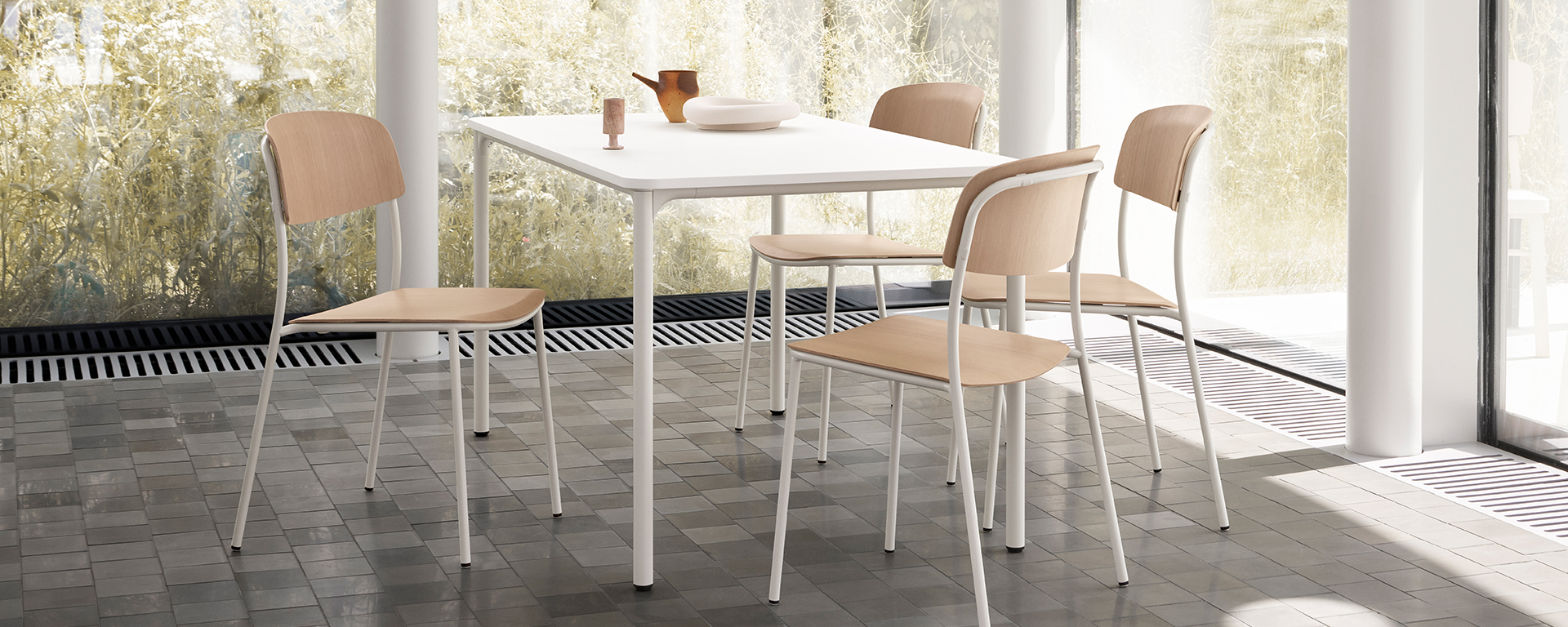Pssst! Do you know how banc was invented?
It was specially developed for Freiburg University Library and is now successfully manufactured in series: The banc lounge furniture system has emerged in a very short period of time. It certainly has not suffered as a result – quite the contrary.
Obsolete home technology, structural deficiencies and high energy consumption were the reasons behind the decision to fundamentally renovate the Freiburg University Library, which opened in 1978. At the time, Brunner had already been a furniture supplier to the university for many years. When the renovation was being tendered in 2006, Brunner didn't have a suitable product for the interior of the new library.
Philip Brunner, Head of Sales, did not want to settle for this. He came up with the idea of designing a completely new product precisely tailored to the requirements of the university library. It should be modular, durable and easy to clean. Though there was barely any time for the development. Nevertheless, the basic concept for the banc lounge furniture system was born. It was a great challenge that offered a huge opportunity.
A good system – thanks to banc.
The perfect working conditions for the designer duo jehs+laub. The objective of the multiple-award-winning designers was to develop a system that would stand the test of time. "We knew straight away that we had to develop very versatile furniture to make use of the various locations in the library with their different functions," says Jürgen Laub, looking back.* "The starting point for us was the old-fashioned bench that also gives the product its name," adds Markus Jehs. "Everyone knows and recognises it. With appropriate modules, the concept can then be adapted to a wide variety of requirements."
Philip Brunner, Leiter des Vertriebs
Das Designer-Duo jehs+laub
In principle, the idea is as simple as it is alluring: The fundamental element is a sturdy, U-shaped aluminium base. Depending on requirements, cushions and seat elements can be attached at three different backrest heights. More elements were developed based on this concept, such as armchairs, bar counters and side tables.
Everything should look slimline, light and perfectly natural, yet withstand the high-volume operation of a library.
With its modularity and simple design, the final result was so impressive that the Executive Director of the university library, Dr Antje Kellersohn, faced criticism about whether or not the library had not been furnished too luxuriously in the end. "We always kept sustainability in mind," she remembers and adds: "Only high-quality furniture will successfully withstand our 24/7, high-volume operation." In addition to flexibility of use, the overarching objective of the library management was to create an optimal learning environment for students. Integrated sockets and ergonomic seating were two other requirements that banc needed to meet.
In the end, these goals were even surpassed: A special tailor-made solution became the modular banc lounge furniture system and successful product range. Philip Brunner is delighted: "There are companies that need up to two years to develop such a product. We managed it in six months."* For him, banc is a prime example of how creativity, flexibility and, most importantly, conviction are the recipe for success at Brunner: "It is a tremendous achievement that was only possible because everyone working on the order believed in it."









